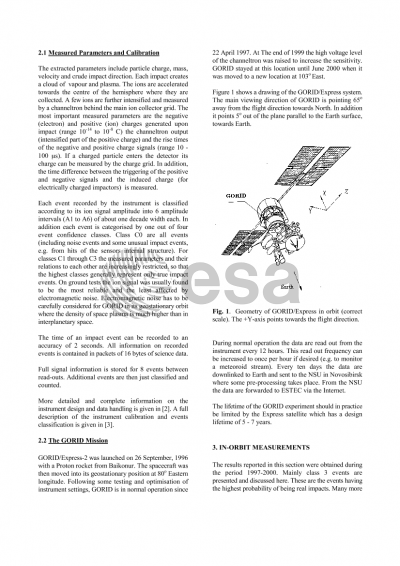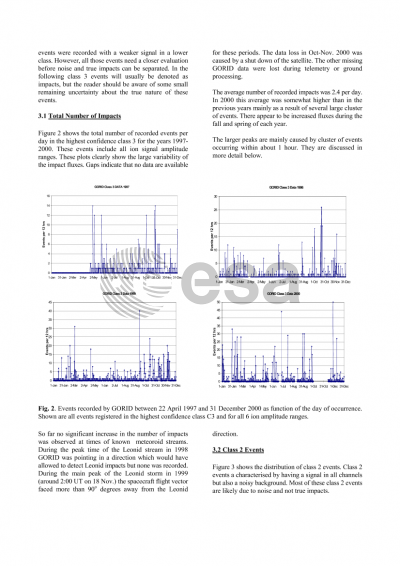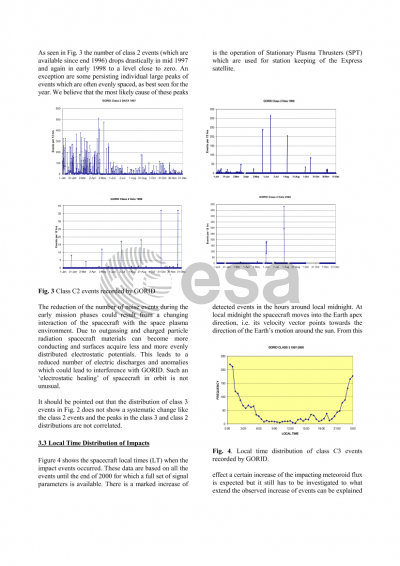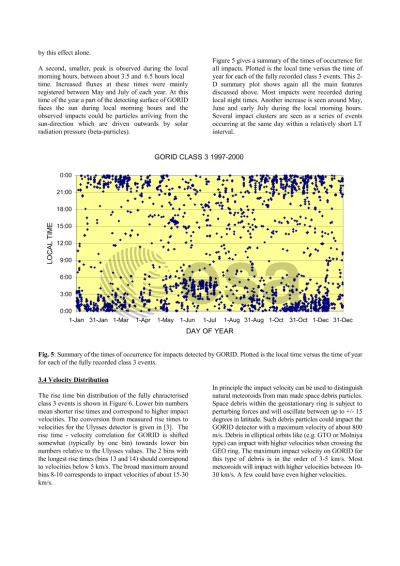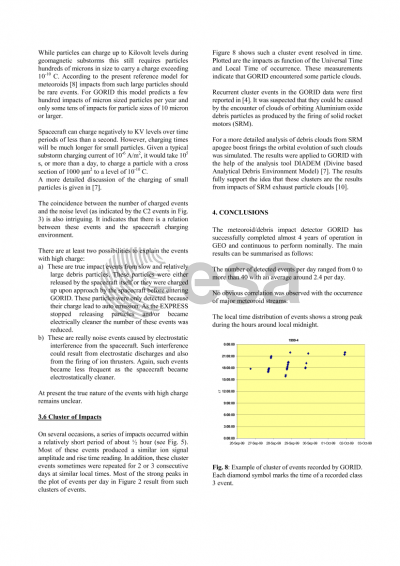Document details

Abstract
Measurements and analysis results from the GORID impact detector for the period April 1997 to end of 2000 are presented. The GORID detector was in a geostationary location at 80° Eastern longitude until June 2000 and has then be moved to 103° East. The average number of events with the highest classification (where all signals agree with pre launch calibration values for true impacts) is 2.4 per day. The daily number of impacts varied between 0 to more than 40. In addition, many impacts occur clustered in time and sometimes reappear at about the same time for one or more days after their first appearance. The most likely source of these clusters are exhaust particles from solid rocket motor firings. The large majority of the impacts occurred during local night times. At local night times GORID points to some extend into the Earth apex direction and this will result in increased fluxes from natural meteoroids. Between May and July increased event numbers are recorded during the local morning hours. At these times during the summer a portion of GORID's detecting surfaces faces the sun indicating that these impacts could be from beta particles arriving from the sun direction. So far no conclusive impacts from meteor stream particles have been registered. Some observations are not yet well understood. These include a certain percentage of impacting particles with apparently a high negative charge and a large percentage of impacts with a long signal rise time which normally indicates a relatively low impact velocity. The data analysis is complicated by potentially disturbing effects like impacts on the detector baffle and noise induced by the surrounding space environment and the spacecraft itself.
Preview

